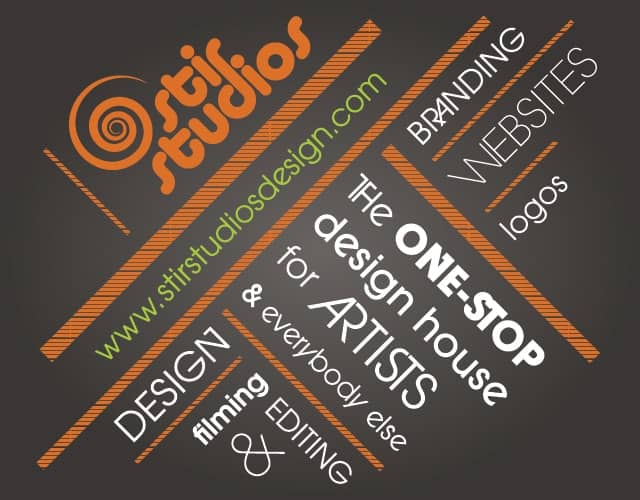As dance artists, we train when we are young, perhaps get a degree in the field, and then we know everything we need to know – right? Ahem, wrong! Those in just about every sector engage in professional development in order to sharpen their skills, refresh their knowledge, and learn about new developments in their area of study. Why should dance be any different?
True, it isn’t always that easy. When it comes to continuing education resources, dance artists can face barriers of time, finances, logistics, accessibility, and more (interestingly, some of the same challenges that such education can help artists address!). Additionally, along with the world at large, questions of equity and inclusion around these resources are in the ether. Those who develop and offer dance sector continuing education – broadly speaking – are working towards making these resources more inclusive, actionable, and plain useful for the artists at hand.
To dig into the what, why, how, and “so what?” of professional development resources for dance artists, I spoke with three individuals at the head of entities who offer them.
Disrupt Dance // Leap N’ Learn: Professional development in dance education
Elena Lambrinos, PhD (Sydney, Australia), developed Disrupt Dance – with a mission to “highlight dance practices, habits and knowledge, and find ways to open up access, participation, and success” in dance education, she shares. In 2021, she also became director of Leap N’ Learn, an organization with a similar mission; it’s a “progressive and developmentally appropriate dance program for children aged 3-7 years.” To Lambrinos, it’s more than just “exercises and ‘stuff’ to teach – it’s a teaching method.”
With owning three businesses during a pandemic, on top of personal developments for Lambrinos, it was time to bring these organizations under one umbrella in order to make it all more manageable. Additionally, “Leap 'N Learn is dedicated to providing exceptional ongoing education for our licensed members, and the Leap 'N Learn audience is exactly who we wanted to reach with Disrupt Dance: dance teachers, studio owners, and administrators,” she explains.

That ongoing education is in the form of “bite-size, accessible, and implementable” dance teaching resources. Lambrinos sees it as “progressive training that is always at the forefront of current research and reflective of what we now know about dance and effective dance education.” To her, that brings “different perspectives and ideas into...[one’s teaching toolkit]” – which can be incredibly meaningful.
Another advantage of that restructuring has been making the resources more accessible, to all interested and not just Disrupt Dance members. That ethos of accessibility is also quite key to Lambrinos’ mission. She elaborates:
"Personally, as a conference attendee or participant, I got tired of seeing the same names and faces again and again. It was like the professional development and training part of our industry was mimicking the studio and stage scene, where a small, select 'inner circle' are prioritized and given opportunities, with little room for new people, perspectives, or ways of seeing things.
The reality is, there are thousands of people out there doing amazing things in dance every single day. I want to hear from those people."
Also vital to Lambrinos is fully crediting and fairly compensating presenters, for their valuable time and intellectual/creative property (for example, presenters get a cut of presentation recording sales). “The plague of 'free work' in dance isn't just limited to performance. We can't survive off exposure...we need money and exposure, and we should be directing people to the work of others. We grow by building each other up,” she affirms.
And why does it all matter? Lambrinos is clear on the need for continuing education. We teach how we were taught, which doesn’t always leave room for new knowledge in the field and fresh perspectives. Further, one handing down knowledge in that way might not necessarily be aware that such a limiting dynamic is at work: an effect that Lambrinos calls “knowledge blindness.” It all gets nuanced and complex; teaching is a collection of “micro-habits,” Lambrinos notes. The devil’s in the details, as the saying goes.
“When we act out of habit, rather than from a space of consideration or explicit intention, we can unintentionally exclude or perpetuate negative stereotypes, and limit, rather than enable, our students,” she asserts. By opening our eyes to alternative approaches, as well as broader ways of seeing the work at hand, professional development can be an antidote to that unfortunate tendency, she believes. “Learning from different people, across different settings and through different modes, can enrich our own perspectives and help us create more diverse learning experiences for our students.”
Mass MoCA’s Assets for Artists: Learning and growing in community
Assets for Artists, an artists’ professional development program from Mass MoCA, began in 2008 – the time of the Great Recession. Blair Benjamin, Director of Assets for Artists, saw how vital it was to skillfully navigate the scant resources that were available at the time.
There were certain federal and state support systems in place – yet Benjamin was clearly seeing how such supports “weren’t dealing with artists’ specific questions,” says Molly Rideout, Assets for Artists Assistant Director. The program began by working with Massachusetts-based artists (those in a wide range of disciplines), but before long expanded to also serve those in Connecticut and Rhode Island.
What does that support look like? “We address all the parts of the artist that aren’t actually doing the craft…addressing the whole artist,” explains Rideout – down to things such as financial health. Open-to-the-public workshops on these sorts of topics occur year round. Upcoming ones include how to make a cooperative, working on a contract, and resource mapping (in other words, organizing the “who you know”).
We want to support artists by saying ‘here’s how you work within the system we have,’ and then also [explore] how we can move things forward structurally. - Molly Rideout
Assets for Artists also holds cohorts, typically groups of around fifteen, for which artists apply to be included. Cohort members have access to microgrants and priority admission to certain workshops. One such special event challenged artists to look forward to the next two years of their life and identify three main goals – whether that be in their creative practice or in something like buying a house. Participants looked at aspects such as the timing of the goal, steps needed to get there, and even the nature of the goal itself. Rideout affirmed that breaking things down in those ways can make seemingly elusive goals more tangible and attainable.
Artists in these cohorts have even maintained ties of support and collaboration after their official time together ends; Rideout notes that many have worked together on projects after being in cohorts together. Additionally, all creative entrepreneurs who’ve worked with Assets for Artists – past and present – become part of a wider support network.
For example, one dance artist had a clear goal of public transparency around her company’s finances and budgeting. Rideout was able to connect her with individuals, from within that wider network, who could help her realize that vision (from nitty-gritty of website design to more holistic feedback around the public interface of the data at hand).

In fact, Rideout sees networking and community-building as key strengths of Assets for Artists. “We can connect artists with those who can help them towards their goals,” she confirms. The program even has survey data demonstrating that such a supportive community has been incredibly meaningful for artists, particularly during COVID. Looking into ways to grow and even more impactfully serve artists, the program would love to serve even more performing artists and writers, shares Rideout.
They’d also love to look more closely at structural root causes of artists’ struggles, something that artists involved with Assets for Artists have shown sincere interest in discussing (particularly within groups of artists in open discussion, notes Rideout). “We live in an economic system that isn’t designed to support artists,” says Rideout. “We want to support artists by saying ‘here’s how you work within the system we have,’ and then also [explore] how we can move things forward structurally.”
Monkeyhouse: Professional Development Brown Bag Lunches and Much More
Boston-based artist Karen Krolak wears many hats: including Co-Artistic Director for Monkeyhouse, Co-Producer of NACHMO (National Choregraphy Month) Boston, Co-Director of aMaSSiT Mentoring Lab, Board Member for the Boston Dance Alliance, Humanities Advisor for Black Artists Sanctuary, and Dramaturg for Luminarium Dance Company. All of these efforts involve professional development, and that’s part of what drew her to them, Krolak says. We’ll take a brief look at those involved with Monkeyhouse to learn more about the how, what, and more of what they offer.
Monkeyhouse is a “nonprofit that connects communities to choreography,” but also holds Brown Bag Lunches. These are informal gatherings that feature an expert on a particular area of artists’ interest or concern. Topics are sourced right from artists, according to their needs; “every one of the topics in this series has been on something that artists have asked us about,” Krolak notes.
We found that what many artists needed at that time was mentoring on navigating logistics and simply life support and resources. - Karen Krolak
These topics have ranged from sports medicine (and how to manage the psychological hurdles that often come with injury recovery, in particular) to performance space accessibility. Krolak underscores the importance of continuing education in wide-ranging topics such as these, for artists of all ages and at all stages of their career.
“All of us need to be doing continuing education..in other fields it’s even required,” she notes. “Learning gaps don’t mean that something’s ‘wrong’ with an artist,” she adds. To Krolak, a community context can also make continuing education even more fruitful. “We all have something to give back…developing a culture of reciprocity will have something to offer all of us.”
As one illustration of that community dynamic, and similar to what Assets for Artists discussed through survey data, Krolak has found that open discussion has been quite meaningful for artists juggling COVID-induced challenges. When the pandemic hit, Monkeyhouse was fortunate to be connected with a donor who funded their mentoring program COVID Collaborations, which opened space for such discussion.
“We found that what many artists needed at that time was mentoring on navigating logistics and simply life support and resources, versus [much to do with] the art form itself,” Krolak recounts. “It’s been quite eye-opening just to see how much resource struggle some artists face, and how challenging support systems can be to navigate.” Indeed, Krolak clearly saw that the things standing in the way of artists making their best work and realizing their visions can be those like childcare costs, logistics (such as transit), and even application fees – rather than anything to do with what they offer as artists.
Accordingly, Monkeyhouse has done a good deal of investigating the funding available to address such obstacles. Navigating the funding process, from researching to actually applying, can “feel like a second job,” Krolak says – and Monkeyhouse doing some of that legwork can free artists up to focus on their craft as artists.
Other resources, such as MASS Cultural Council’s Recovery Grants, can be relatively simple to navigate yet many artists aren’t aware that they might be eligible. Monkeyhouse raises the awareness around such funding opportunities. To “someone who feels like they can never get there,” to the life and work that they envision for themselves as a creative entrepreneur, all of that can make a tremendous difference, Krolak affirms.
All of it goes back to listening to the people living these experiences, the artists – “stepping back and hearing what [their] experiences are,” she notes. That can help build new systems that better serve us – all of us – as well as assist artists with the challenges they’re facing today. Learning and growing together – professional development for dance artists can be the space where that starts, and this art form’s potential magic begins.





